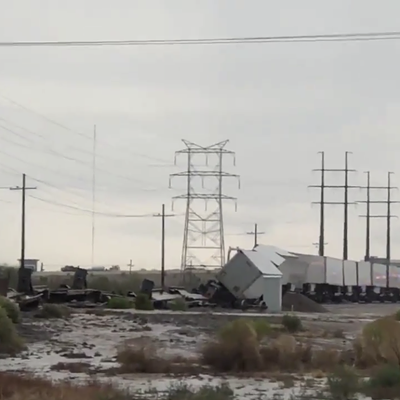The summer of 1983 had been a wet one, with almost 50 percent more rainfall than normal, so the ground was soaked. Then, in late September, it started raining, and didn't stop for more than a week. Six inches or more fell across a huge swath of Southern Arizona, with widespread and catastrophic results.
The numbers tell the story: 14 killed; 10,000 people temporarily homeless; more than 800 structures destroyed or damaged; nine counties declared federal disaster areas; road and bridge damage around Tucson of $54 million; and a statewide price tag of a half-billion dollars.
Current Pima County Administrator Chuck Huckelberry was then director of the county's Transportation and Flood Control District
"The community came to a standstill," he said. "Almost every bridge was closed, damaged or destroyed, and there was a lot of property damage, and many people were killed. It was a harrowing, devastating time."
Assistant City Manager Benny Young, who was city engineer 20 years ago, recalls the experience painfully. But, he adds, "There was little or no bank protection on our major river systems then."
Because of that, according to Mike Zeller, the manager of the Water Resources Department for the consulting firm Tetra Tech, "The rivers themselves moved. We learned the real problem wasn't flooding, but erosion. If we're going to have flooding rivers, we have got to have something to protect the banks."
Across Tucson in 1983, the usually bone-dry rivers ran high with swiftly moving water that ate away at their banks, in some places shifting the channel by hundreds of feet. In an infamous case, a new building at First Avenue and Rillito Creek went crashing into the water, its foundation undercut by erosion.
Zeller says one of the lessons taught by the 1983 experience was that the old way of doing things by using rock riprap as bank protection didn't work for a storm like that--it was blown away by the raging water. But, he adds, "The new technology of soil-cement proved itself with flying colors."
As a result, in the last 20 years at a cost of $112 million, Pima County has installed 78 miles of soil cement bank protection, including 28 along the Santa Cruz River, 24 on the Rillito and 12 on Pantano Wash. They have additionally put in 10 miles of levees, but at the same time have purchased 12,000 acres of flood control property and are looking at environmental restoration projects on the Santa Cruz and Rillito.
Not everyone is happy with what has been done with the soil cement program. Herb Osborn, a retired civil engineer and hydrologist with the federal government, thinks the stuff is ugly.
"I don't enjoy looking at the concrete and believe the county could have left the rivers alone," he says.
Doug Shakel, geology professor at Pima Community College, goes further. He calls the county's soil cement project a "channelization effort." Shakel also labels what the county has implemented as a "flood guarantee program" that will prevent erosion but aggravate flooding.
"Because the streams can't get any bigger," he says, "there is a false sense of security." The same amount of rainfall as in 1983, Shakel believes, will cause extensive flooding, because the water will rise in the streambeds well beyond their banks--since nature won't be able to widen the channels to carry additional volume.
As an alternative, he thinks, the county should have determined the approximate extent of a flood which would occur every 1,000 years, and then buried concrete walls of protection at that point. Between that line and the existing rivers, he says, should have been a no-build zone.
Huckelberry doesn't believe that type of setback effort was necessary, in part because many secondary streambeds in the Tucson area have been left alone, and they can store water in time of flooding, he says.
"Some of our natural river channels have been incised to contain a 100-year storm within their banks," he says. That shouldn't increase downstream flooding, in his opinion, but Huckelberry warns, "The danger is we might have a larger flood," which could cause extensive damage.
Shakel contends that the lack of historic data concerning large flooding occurrences in the area makes any assumptions about the size of storms suspect.
"We don't know how big the '83 flood was in terms of a once every hundred-year event," he says.
For his part, Osborn remembers one local news report from 1983 that concluded, "We don't have to worry for another 100 years."
That, of course, is nonsense. But what would happen if we had a repeat of the torrential downpour of 20 years ago?
Young thinks there would be substantially less damage. Mike Zeller concurs, "We'd have little to no damage now because of the bank protection."
Chuck Huckelberry adds, "There would be some flooding in Marana, but I think we'd come through it fairly well."
Doug Shakel disagrees. He says that because we have allowed development right up against the riverbanks, the same amount of rainfall as 1983 would guarantee property damage.
Like many things in life, time--and the weather--will decide which of those predictions is correct.










